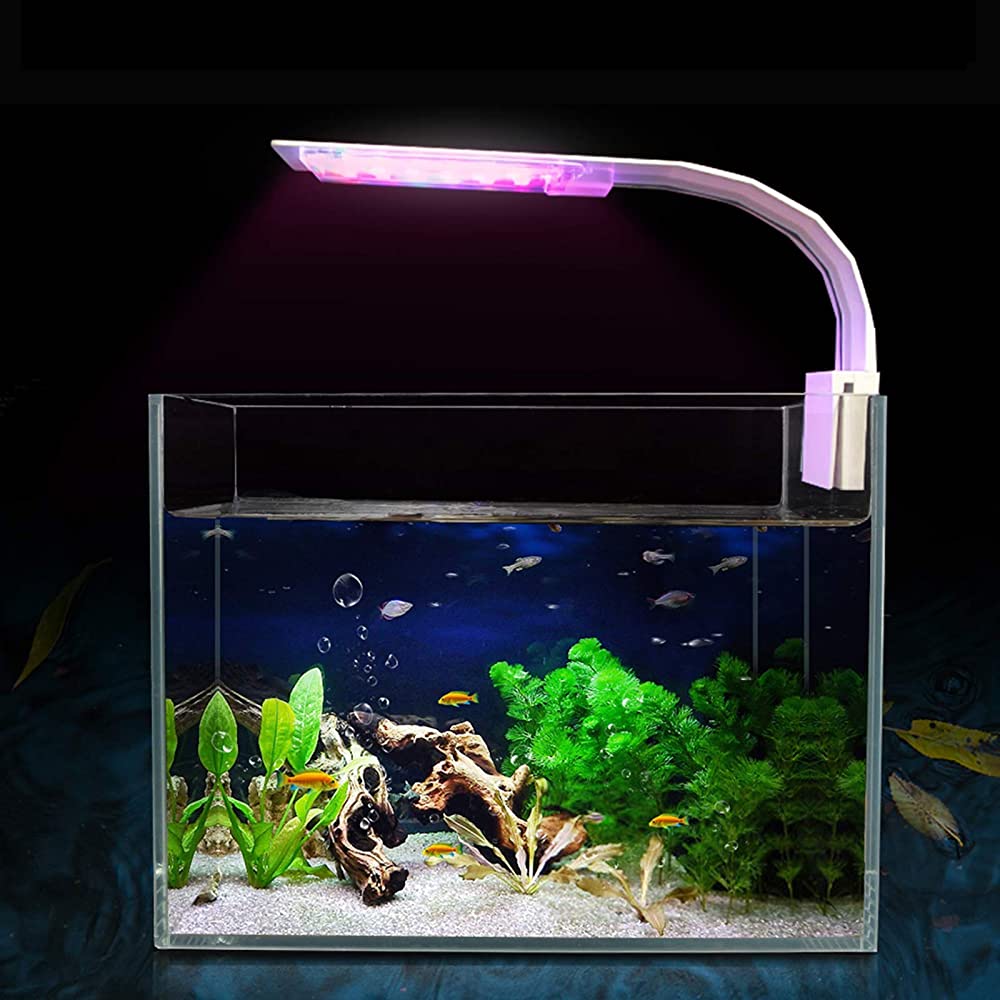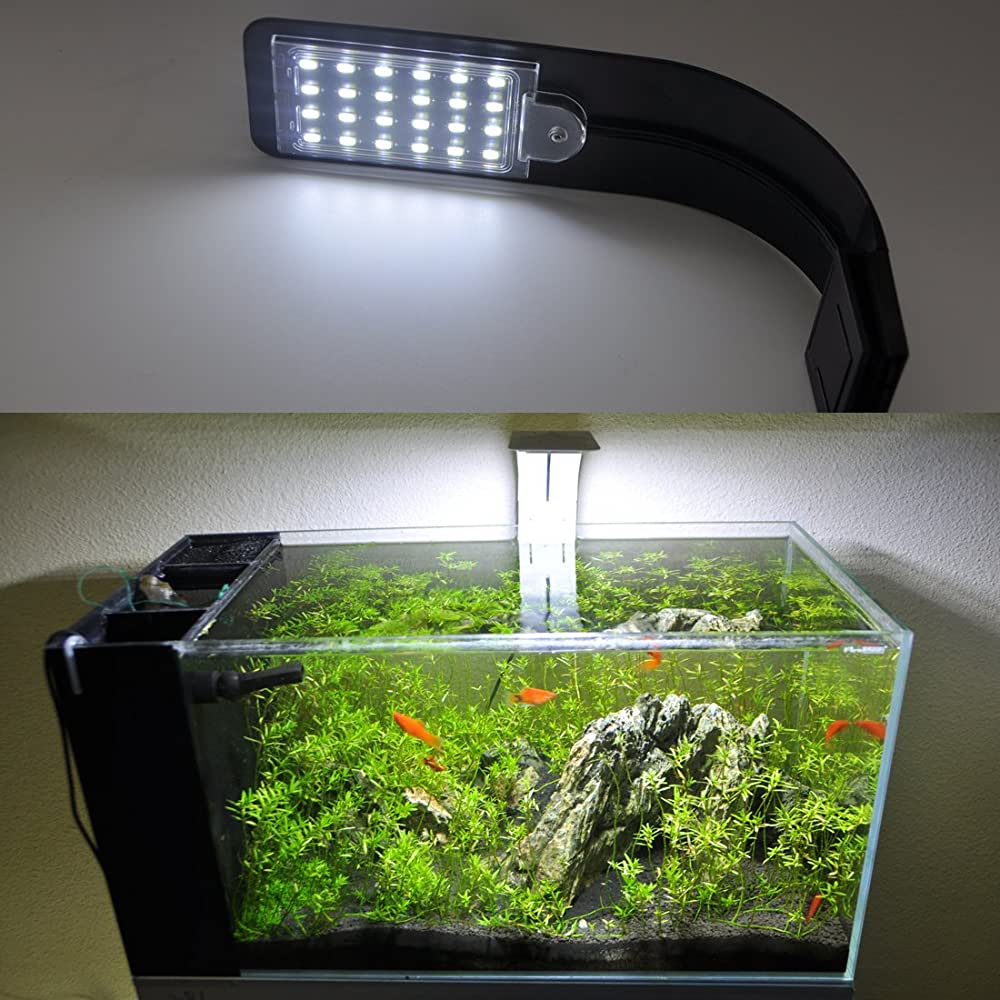Have you ever noticed unsightly green slime growing in your aquarium? That’s algae, and it can be a headache for aquarium enthusiasts. Algae growth not only ruins the aesthetic appeal of your aquarium but can also have a negative impact on the health of your fish and plants. Fortunately, one of the key factors that affect algae growth is light, and with the right aquarium lighting, you can effectively prevent algae growth in your tank. In this article, aquarium lighting affect algae growth, we’ll take a closer look at how light affects algae growth and provide you with some helpful tips on choosing the right aquarium lighting and implementing strategies to keep algae at bay.

When it comes to maintaining a healthy and thriving aquarium, understanding the complex interplay of factors such as water chemistry, nutrient levels, and aquarium lighting affect algae growth lighting is essential. One key factor to consider is the light spectrum and intensity of your aquarium lighting, as this can directly impact the growth and health of your aquatic plants and animals.
The type of lighting you choose for your aquarium will depend on a variety of factors, including the size and shape of your tank, the types of plants and animals you have, and your personal preferences. LED lighting is a popular choice for many aquarium enthusiasts due to its energy efficiency and customizable settings.
However, simply installing high-quality LED lights is not enough to prevent algae growth and promote a healthy aquarium. You also need to consider factors such as light cycle and duration, as well as the placement and positioning of your lights.
For example, many aquarists recommend using a timer to regulate the duration of light exposure in your aquarium. This can help simulate the natural day/night cycle and ensure that your plants and animals receive the appropriate amount of light energy each day. Similarly, positioning your lights at the correct height and angle can help ensure that they provide adequate coverage for your entire tank.
In addition to these strategies, you may also need to adjust the light intensity and wattage of your aquarium lighting to prevent algae growth. Too much light can lead to excessive algae growth, while too little light can hinder plant growth and compromise the overall health of your aquarium.
One way to monitor light intensity is to measure the amount of Photosynthetically Active Radiation (PAR) reaching the bottom of your tank. PAR meters are affordable and easy to use, and can help ensure that you are providing the right amount of light energy for your plants and animals.
Of course, even with the right type of lighting and proper placement and positioning, algae growth can still be a challenge in any aquarium. Regular maintenance and cleaning of your aquarium lighting can help prevent algae buildup and ensure optimal conditions for your plants and animals.
For example, algae scrubbers are a popular tool for removing excess algae from aquarium water. These devices use mechanical filtration to remove algae from the water before it has a chance to grow and spread throughout your tank. Additionally, regular water changes and aeration can help keep nutrient levels in check and prevent the buildup of harmful bacteria and algae.
What are the different types of algae and their lighting requirements?
Let’s talk about the different types of algae and their lighting needs. Did you know that there are many types of algae, each with its own unique lighting requirements? For example, some types of algae thrive in bright light, while others prefer low light conditions. This is because different algae species have adapted to grow in different environments, from shallow ponds to deep oceans. Therefore, it’s essential to understand the specific lighting needs of the algae in your aquarium to prevent their growth.
Aside from the types of algae, there are also various factors that affect algae growth. One of the most important factors is the duration of light exposure. Algae require a certain amount of light to grow, and if the light is on for too long, it can encourage their growth. This is why it’s crucial to have a consistent light cycle for your aquarium, with no more than 10-12 hours of light per day. Additionally, the intensity and wavelength of light also play a significant role in algae growth. Too much light, especially in the blue and green spectrum, can cause an algae bloom, while too little light can stunt their growth. It’s essential to strike a balance and provide the optimal lighting conditions for your aquarium.
Now, let’s talk about the optimal light spectrum for preventing algae growth. While algae require light to grow, they have specific light spectrum preferences. For example, red and yellow light are not as conducive to algae growth as blue and green light. This is because the pigments in algae absorb blue and green light more efficiently than other wavelengths. Therefore, choosing the right light spectrum for your aquarium can help prevent algae growth. LED lights are a popular choice for aquariums because they offer a customizable spectrum, allowing you to adjust the light to your aquarium’s specific needs.
What are the different types of aquarium lighting?
Let’s dive into the world of aquarium lighting and explore how to choose the right lighting for your aquarium. First, let’s discuss the different types of aquarium lighting available. There are four main types of aquarium lighting: fluorescent, LED, incandescent, and metal halide. Each type of lighting has its own unique benefits and drawbacks, so it’s essential to consider which type of lighting is best suited for your aquarium.
When choosing the proper aquarium lighting, there are several factors to consider. The first factor is the size of your aquarium. The lighting needs of a small aquarium differ from those of a large aquarium. Therefore, you need to choose a light that is appropriate for the size of your aquarium. Additionally, you need to consider the type of plants and fish in your aquarium. Different plants and fish have varying lighting needs, and it’s essential to choose a light that meets those needs. For example, plants that require high light intensity will need brighter lighting, while those that prefer low light conditions will need dimmer lighting.
Another crucial factor to consider when choosing aquarium lighting is energy efficiency. High-quality LED lights are more energy-efficient than other types of lighting, such as fluorescent and incandescent lights. LED lights use less energy and produce less heat, making them more cost-effective and safer to use. They also have a longer lifespan, so you won’t need to replace them as often as other types of lighting.
Now that we’ve discussed the factors to consider when choosing aquarium lighting let’s talk about the recommended lighting for preventing algae growth. The best lighting for preventing algae growth is LED lighting with a color temperature between 6500K to 8000K. This color temperature mimics natural daylight and provides the optimal light spectrum for plant growth while preventing algae growth. Additionally, the intensity of the light should be adjusted to meet the specific needs of your plants and fish. Too much light can promote algae growth, while too little light can stunt plant growth.
When selecting LED lighting for your aquarium, make sure to choose a light with customizable settings. This will allow you to adjust the light spectrum and intensity to meet the specific needs of your aquarium. Additionally, choose a light with a timer so that you can set a consistent light cycle for your aquarium. This will help prevent algae growth by providing consistent and regulated light exposure.
How to implement strategies to prevent algae growth?
Now that we’ve discussed how to choose the right aquarium lighting, let’s talk about implementing strategies to prevent algae growth. Algae can be a nuisance in an aquarium, and prevention is key to maintaining a healthy and thriving aquatic environment. Here are some strategies to help prevent algae growth in your aquarium:
The first strategy is to regulate the light cycle and duration. As mentioned, algae require light to grow, and excessive light exposure can encourage their growth. Therefore, it’s important to regulate the light cycle and duration to prevent algae growth. A consistent light cycle of 10-12 hours daily is ideal for most aquariums. You can use a timer to ensure a consistent light cycle and adjust the light exposure duration depending on your aquarium’s needs.
Another strategy to prevent algae growth is to position your aquarium lighting correctly. Placing your lights too close to the water’s surface can increase the light intensity, promoting algae growth. It’s recommended to position your lights above the aquarium and at a distance that ensures even light distribution. This will help prevent algae growth and promote healthy plant growth.
Light intensity and wattage are also important factors to consider when preventing algae growth. As previously mentioned, too much light can promote algae growth. Therefore, it’s crucial to choose the appropriate light intensity and wattage for your aquarium. You can determine the appropriate light intensity by considering the type of plants and fish in your aquarium. Some plants and fish require high light intensity, while others require low light conditions. Additionally, choosing LED lighting with customizable settings can help you adjust the light intensity to meet the specific needs of your aquarium.
Lastly, regular maintenance and cleaning of your aquarium lighting can help prevent algae growth. Over time, dust and debris can accumulate on your lights, reducing their effectiveness and promoting algae growth. It’s essential to clean your lights regularly to ensure they’re functioning at their best. You can use a soft cloth or brush to gently clean the lights and remove any dust or debris. Additionally, you can replace your lights periodically to ensure they provide the appropriate light spectrum and intensity for your aquarium.
In conclusion,
Proper aquarium lighting is essential for preventing algae growth and promoting a healthy and thriving aquatic environment. We have discussed several key points in this article, including the different types of aquarium lighting, factors to consider when choosing aquarium lighting, strategies for preventing algae growth, and tips for maintaining and cleaning your aquarium lighting.
To summarize, choosing the right type of lighting, considering factors such as the light spectrum, intensity, and wattage, and regulating the light cycle and duration are all important steps to prevent algae growth. Additionally, positioning your lights correctly and regularly maintaining and cleaning your lights can further help prevent algae growth and promote healthy plant and fish growth.
Proper aquarium lighting is crucial not only for preventing algae growth but also for the overall health and well-being of your aquatic environment. Adequate lighting can promote plant growth, aid in fish behavior and health, and enhance the overall aesthetic appeal of your aquarium.
Finally, we recommend regularly monitoring your aquarium lighting and making adjustments as needed to ensure optimal conditions for your aquarium. Additionally, consulting with a professional or experienced aquarist can provide valuable insights and recommendations for your specific aquarium needs.











